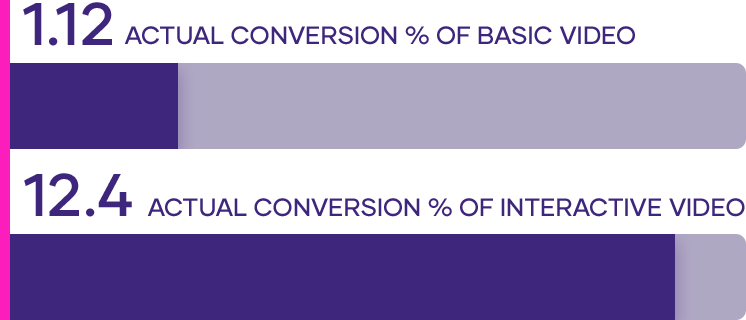Digital vs Physical Tools
This is part two of our series on the benefits of merging both physical and digital tools as part of your marketing strategy. If you need a refresher on the power of physical tools, click here for part 1. Today’s topic is digital tools and their necessity in today’s tech-centered world.
A Fresh Spin on Traditional Tools
Twenty years ago, our marketing tool options were pretty limited. A distributor could give a prospect a brochure, a newspaper or a cassette tape, but there were a few drawbacks—inability to customize the message, unreliable distribution techniques, and no way for an easy follow up are just a few.
 Today, we’ve eliminated the majority of those challenges with the introduction and adoption of digital tools. Now, instead of mailing a brochure to a relative, you can send them a video that utilizes impressive graphics to convey your information in a more engaging way. Instead of making time to sit down with a traditional flipchart, you can text a friend a multimedia presentation that they can view instantly. Thanks to social media, your warm and cold markets are right at your fingertips, shareable with just a tap on a screen. And, perhaps just as important, there are vast analytical options available, meaning that you can know who’s seen your message, and whether or not they were interested in learning more—which means you have a lot more control over the visibility of your message.
Today, we’ve eliminated the majority of those challenges with the introduction and adoption of digital tools. Now, instead of mailing a brochure to a relative, you can send them a video that utilizes impressive graphics to convey your information in a more engaging way. Instead of making time to sit down with a traditional flipchart, you can text a friend a multimedia presentation that they can view instantly. Thanks to social media, your warm and cold markets are right at your fingertips, shareable with just a tap on a screen. And, perhaps just as important, there are vast analytical options available, meaning that you can know who’s seen your message, and whether or not they were interested in learning more—which means you have a lot more control over the visibility of your message.
Below, we’ll take a closer look at some of the most essential features of digital tools:
You Need Great Analytics
In a white paper sponsored by SAP, IDC projected that this year, “75% of businesses (specifically those involved in manufacturing) will update their operations and operating analytics-based situational awareness to mitigate risk and speed time to market.” That’s because in today’s world, you can’t afford to not have decent analytics. And that’s one of the most important features that digital tools provide access to.
When you leave a stack of flyers in a waiting room, you have no idea what’s going to happen to them—or whether they’ll be seen at all. However, when you share the same image via social media, you can easily find out how many people viewed it. Additionally, you can see how many clicked a link to your website, as well as what information they saw there, and if they followed any calls to action. This is information that can be of vital importance to both corporations and distributors when assessing follow up efforts and evaluating marketing strategies.
Wondering how to figure out what works and what doesn’t for your specific audience? The only way to know for sure is to analyze your data—data that is often built-in with the distribution of digital tools.
What Video Can Do for You
Did you know that 80% of all web traffic is video? Or that people are 67% more likely to make a buying decision after viewing a video? Video has power to attract attention, evoke emotion and create value. And that value translates to more customers, better engagement, and, ultimately, higher sales. Because of this, digital tools that utilize video are among the most valuable in your toolbox.
Interactive videos add another layer of efficiency by allowing you to quickly and easily add clickable interactions to any YouTube video or selfie video. By making your video interactive, your viewers will be given the ability to click to shop now, send you an email, schedule a meeting, follow you on social, or even call you directly all from within the video. Once created, you can share your interactive video directly on to Facebook, Twitter, and LinkedIn, or copy and paste the video link in an email body or text blast. It’s a way to urge action within a medium that already has a high probability of being seen, making it a great marketing investment.
We Need to Talk About Social
Here’s a fun social experiment: take a poll of your office and ask everyone to raise their hand if they’ve had some kind of interaction with social media within the last 24 hours. You probably won’t be surprised to see almost every hand in the air.
Considering the fact that social media didn’t exist when the majority of today’s workforce was born, it has had a profound effect on multiple generations since its creation. While not everyone is tied to their phone 24/7, almost everyone has some level of social media presence—something that is also true of the modern business. And that presence can make or break your marketing efforts.
There’s a lot of anecdotal evidence about the effects of savvy social media use on buyer trends, but its effects are well documented in data, too. Social media marketing has been shown to establish brand awareness, increase sales and provide improved customer insights, all for a relatively low cost—after all, most social media platforms are free to join, meaning that your costs are limited to content creation and ad fees.
Some More Pros of Digital
We think it’s pretty clear that the need to invest in and incorporate digital tools is paramount to any direct sales company’s success. But in case you’re not sold yet, keep in mind that digital tools are:
- Interactive
- Easily shareable
- Can be relatively inexpensive to produce
- Customizable or generic
- Unlimited in quantity
- On-trend
- Allows for quick and effective follow-up opportunities
(Data provided from a 2019 Verb case study)
This is in contrast to physical tools, which:
- Are more expensive to produce and distribute
- Are static
- Can be seen by some as outdated
- Are more difficult to individually customize
Obviously, both digital and physical tools have their place in marketing, but you also have a limited budget. So, how do you decide which one to focus on? That’s coming up in part three of this series, so stay tuned!
- verb

